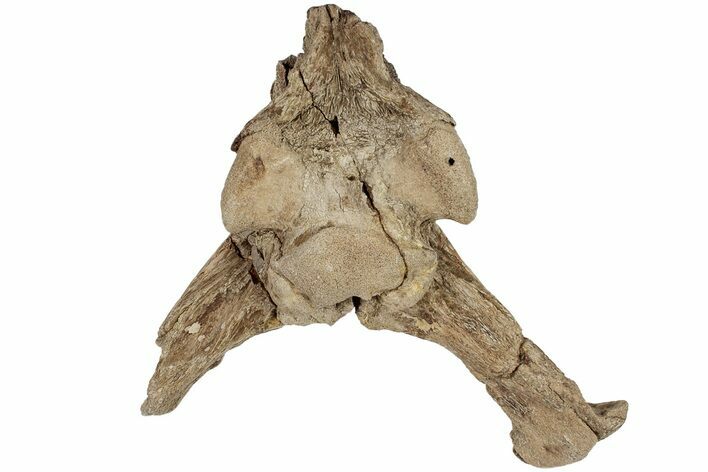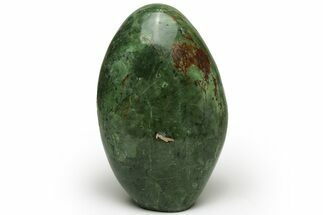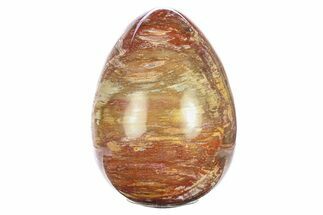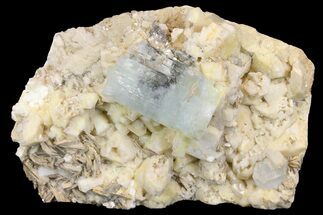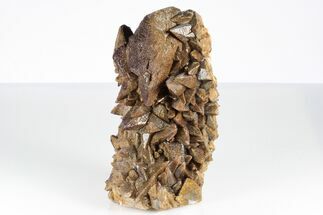This Specimen has been sold.
6.4" Fossil Mosasaur (Platecarpus) Brain Case - Kansas
This is a 6.4" wide, brain case from the Mosasaur (Platecarpus sp.) from the Late Cretaceous, Smoky Hill Chalk, Gove County, Kansas. Platecarpus is an extinct aquatic lizard belonging to the mosasaur family. This bone was situated at the top of a juvenile mosasaur's skull, prior to where the spine connects to the head. Sutures where the bone fused are visible and add visual appeal to an already awesome specimen. Present on this specimen are the basioccipital, opisthotic and portions of the paraoccipital processes.
This specimen comes with a display stand for aesthetic display.
This specimen has a few repaired cracks and areas of glue stabilization that are intended to help the bone maintain structural integrity.
Platecarpus is an extinct aquatic lizard belonging to the mosasaur family. Fossils have been found in the United States as well as possible specimens in Belgium and Africa. It reached lengths of up to 14 feet long: half of that length was its tail alone. Platecarpus probably fed on fish, squid, and ammonites. Like other mosasaurs, it was initially thought to have swum in an eel-like fashion, though a recent study suggests that it swam more like modern sharks.
This specimen comes with a display stand for aesthetic display.
This specimen has a few repaired cracks and areas of glue stabilization that are intended to help the bone maintain structural integrity.
Platecarpus is an extinct aquatic lizard belonging to the mosasaur family. Fossils have been found in the United States as well as possible specimens in Belgium and Africa. It reached lengths of up to 14 feet long: half of that length was its tail alone. Platecarpus probably fed on fish, squid, and ammonites. Like other mosasaurs, it was initially thought to have swum in an eel-like fashion, though a recent study suggests that it swam more like modern sharks.
The Smoky Hill Chalk Member of the Niobrara Chalk formation is a Cretaceous conservation Lagerstätte, or fossil-rich geological formation, known primarily for its exceptionally well-preserved marine reptiles. It outcrops in parts of northwest Kansas--its most famous localities for fossils--and in southeastern Nebraska. Large, well-known fossils excavated from the Smoky Hill Chalk include marine reptiles such as plesiosaurs, large bony fish such as Xiphactinus, mosasaurs, pterosaurs, and turtles.
SPECIES
Platecarpus sp.
LOCATION
Gove County, Kansas
FORMATION
Niobrara Formation
SIZE
6.4 x 6.4"
CATEGORY
SUB CATEGORY
ITEM
#197530
We guarantee the authenticity of all of our specimens.
 Reviews
Reviews




